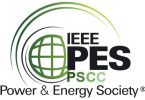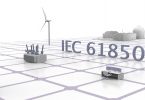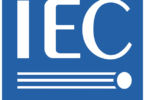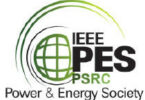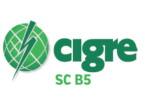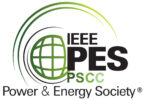by Christoph Brunner, it4power, Switzerland
Mid-February we had our first North American working group meeting after the pandemic in Kansas. The week before there was DistribuTECH in San Diego. For this first Edition of the year, I will give you an overview on some of the key topics we are currently working on.
With regard to modeling specific domains, we are still working on the models for travel wave fault location as well as on the second editions of the models for condition monitoring. We are as well working on the second Edition of the technical reports IEC 61850-7-5 and -7-500.
The current focus there is on two topics:
- More details about modeling local and remote control and
- Modeling of specific switchgear like withdrawable circuit breakers and combined earthing and disconnecting switches.
The approach is, to describe the modeling aspects of a withdrawable circuit breaker as a Basic Application Profile (BAP; for more about BAPs see my last column). The question of how to model withdrawable circuit breakers was as well identified by the IEEE PSRC (Power System Relaying Committee) working group H30 (User Feedback).
With regard to the mapping of IEC 61850 on Modbus, it was decided to do initially just a technical report instead of a technical specification, to get some feedback from usage before we go to a standard. We are now ready to issue a DTR, which will focus on the monitoring direction.
On the other side – the communication with IEC 61850 to the control center, which was initially discussed in a technical report (61850-90-2), will now be published in a revised version as Technical Specification (IEC 61850-80-6).
In the last WG Meeting, we closed an ad hoc taskforce that was looking into TAI (International Atomic Time) versus UTC. TAI is a continuously increasing time while UTC considers the variation in earth rotation speed. To compensate for the slowdown of the earth rotation speed, leap seconds are added to UTC occasionally. That means, whenever a leap second is inserted, a minute has 61 seconds.
This creates an issue with time stamped events, as the typical time stamp formats will have the same values for the leap second as for the second before. Actually, UTC is 37 seconds behind TAI. There are ongoing discussions about abolishing leap seconds – decision yet to be taken. As currently the earth rotation speed has accelerated, it may take a while until the next leap second occurs, so the taskforce decided that no further action is required.
The work on role-based access is still ongoing. A new topic that is being addressed is the question on how to secure SCL files and the engineering process with its roles in general.
Major work done is related to the engineering process. A focus here is on improved specification. Improved specification that supports a top-down engineering process is requested by utilities (see Industry News “Common User Vision on IEC 61850 Engineering” in this magazine). Work on three future documents of IEC 61850 make that vision a reality.
The future TR 61850-90-30 introduces the possibility to specify data flow independent of IEDs, introduces the concept to model applications and introduces the IED specification file (isd). The second Edition of part 7-6 will introduce the possibility to model basic application profiles in SCL. It will as well add possibilities to specify behavior of an application by attaching a 61131 file to the application. And finally, the new TR 61850-90-29 will introduce the modeling of physical I/Os. For each input as well as for each output, there will be an instance of a new logical node modeling the characteristics of the input or the output. Using the concept of modeling signal flow introduced with IEC 61850-90-30, IEC 61850 data objects can be linked to the physical I/O.
The planned second amendment for IEC 61850-7-3, which intended to support some requirements from IEC 61850-7-420 was cancelled as there was not enough support to reach a short-term consensus. This will be addressed in Edition 3. Planning for Edition 3 of the core parts has been started. New requirements being entered by user feedback are collected in a database. They will be prioritized, and the most important ones will be selected to be incorporated in Edition 3. A time driven process will be used for Edition 3, which means that topics that are not ready will be removed, rather than delaying the target date for publication of the Edition 3.
A small second amendment is in preparation for part 6. This mainly introduces Global Unique Identifiers – a requirement from other parts like role-based access (61850-90-19) and HMI configuration (61850-6-2).
IEC 61850 continues to be a living standard. While digital substations using sampled values are becoming a reality, new features are added which will further support the digitization of the electrical grid. In the working group, we are looking for young professionals that will further develop the standard. If you want to shape the future of the digitization of the electrical grid – contact your national committee to join our working group!
Biography:

Christoph Brunner is the President of his own independent consulting company it4power LLC based in Switzerland. He has over 25 years of experience with knowledge across several areas within the Utility Industry and of technologies from the Automation Industry. He has worked as a project manager at ABB Switzerland Ltd in the area of Power Technology Products in Zurich / Switzerland where he was responsible for the process close communication architecture of the automation system. He is Convener of WG 10 of the IEC TC57 and is a member of WG 17, 18 and 19 of IEC TC 57. He is member of IEEE-PES and IEEE-SA. He is an IEEE Fellow and is active in several working groups of the IEEE-PSRC and a member of the PSRC main committee and the subcommittee H. He is advisor to the board of the UCA international users’ group.



